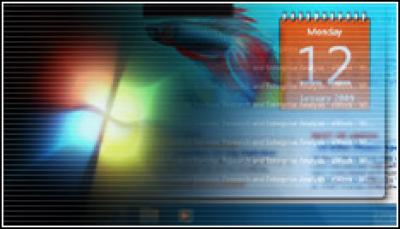Windows 7 Licensing Issues

Microsoft needs Power PC users to help drive enterprise uptake of Windows 7, but there’s a problem.
The reception to Microsoft Vista Enterprise was cool to say the least despite the fact that Vista had good enterprise features. Microsoft hopes that Windows 7 will get a better response if it can get Power PC users are onboard. But thanks to Microsoft’s licensing plan, many of the enterprise features in Windows 7 aren’t in versions that power users will have access to.
A few weeks ago, I attended a Microsoft-hosted workshop extolling the benefits the forthcoming Windows 7 operating system would provide for Microsoft’s enterprise customers. With that audience focus in mind, the workshop kicked off with a brief discussion of the five trends in client computing as Microsoft currently sees them: consumerisation, carbon-neutrality, contingency, cost and compliance.
Taking the adoption of user-owned PCs for business use to an extreme, Microsoft representatives described cases where users have explicitly declined the use of corporate-owned PCs in favour of their own higher powered setups. The Microsoft rep did couch this claim somewhat, saying that due to the lousy economy, she expected to see less of this extreme case in 2009, but that the trend toward consumerisation would continue.
In Microsoft’s eyes, the kind of users exemplified in this scenario—power users, frequently on the road or out of the office, with powerful computers at their disposal—will be among the vanguard helping drive adoption of Windows 7 within the enterprise. Microsoft envisions that these users will experience all the great new features in Windows 7, and that they will begin pressuring IT toward corporate adoption of the new OS.
Certainly, there are many features in Windows 7 that could be of interest to enterprise IT implementers: BranchCache promises client-based file caching for SMB and HTTP traffic for small offices; DirectAccess offers clientless remote access and group policy-based administration; application whitelisting is available via AppLocker; and the improved Virtual Desktop Infrastructure and application virtualisation capabilities offer greater opportunity to centralise and standardise the enterprise computing experience.
But let’s face it, there were compelling enterprise-grade features in Vista, too. BitLocker disk encryption, which has been enhanced with easier setup and new USB storage device encryption in Windows 7, got its start with Vista. And Vista delivered significant enhancements to the way Group Policy works, leveraging a new template format that created more management flexibility while also reducing bloat in the SYSVOL when replicating across a domain.
And we all know what happened—or didn’t happen—with Vista.
Microsoft’s attitude seems to be that because users didn’t cotton to Vista, administrators didn’t feel the need to upgrade without the users on board. Pull in users to Windows 7 and corporate IT will surely follow.
The problem with this thinking is that the Windows 7 licensing scheme won’t allow these influence-peddling power users to actually experience any of those features that could be of interest to enterprise IT. BitLocker, AppLocker, BranchCache, DirectAccess and VDI are all part of the Windows 7 Enterprise build, which is available only to Software Assurance customers (they are also in the Ultimate build, which likely will be priced out of everyone’s range as it was with Vista). Astoundingly, none of these features are even a part of the Business edition, which Microsoft positions for small companies that don’t have IT staff, but do apparently have a domain.
Instead, the power users will be familiar with some of the glossier features of Windows 7 that come with the Home Premium version they likely will get with their next home computer: Aero Glass enhancements, the new Taskbar and Start Menu, libraries, Home Group, and maybe the Touch interface. And as numerous eWEEK readers have made quite clear in their e-mail responses to my January initial look at the Windows 7 beta, this collection of features isn’t driving their business toward the new OS.
If Microsoft wants its power-using home audience to drive adoption of Windows 7 into the enterprise, the company needs to give its presumptive evangelists something to hang their hats on. I’d love to see Microsoft plant a flag and make a pledge to protect all Windows 7 users’ data in case of theft, bringing BitLocker (full disk) and BitLocker ToGo (USB drive) encryption to each iteration of Windows 7.
Microsoft representatives at the workshop made it clear they view BitLocker key management too complex for implementation without IT, so the software maker will need to do something to remedy this problem. Whether these enhancements are simplifications to the feature itself or instead come in the form of creative and engaging how-to documentation or videos, the inclusion of BitLocker among the operating system’s standard features could signal enough change to lead more IT thought leaders to take a closer look at the next Windows.